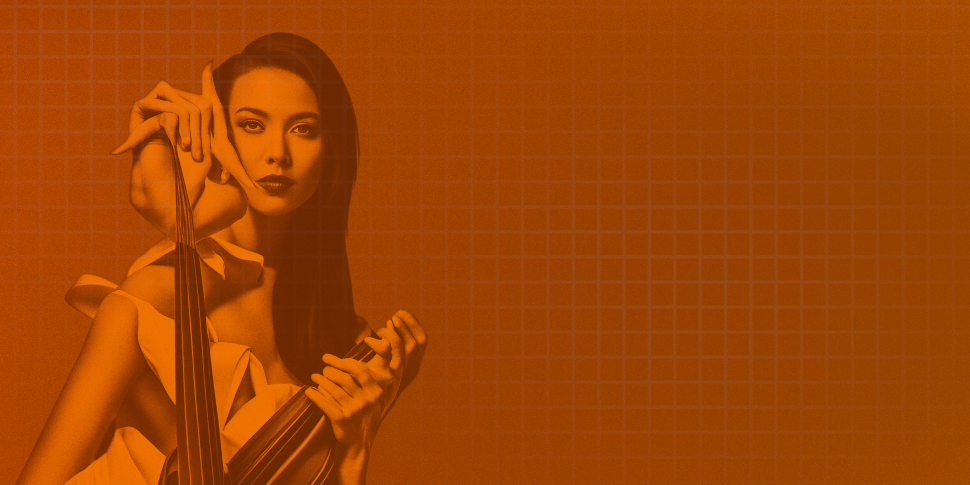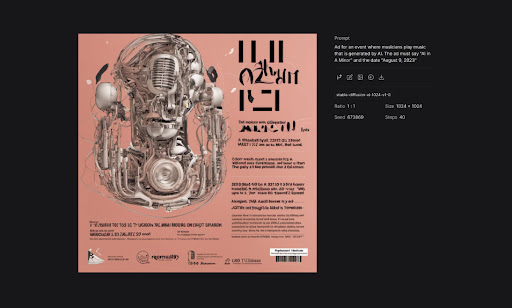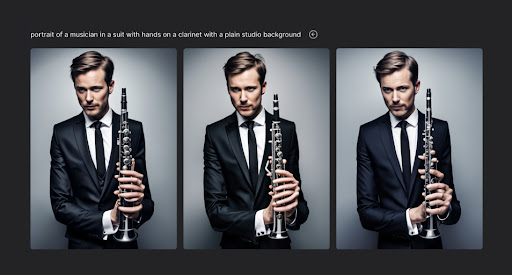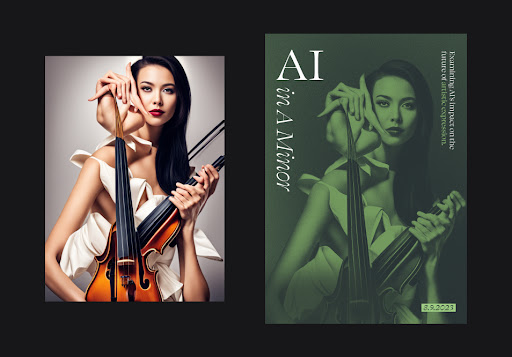An AI-Powered Campaign for an AI-Powered Event

You can hardly escape the headlines about AI’s promise to revolutionize the way we work. By now, most of us have dabbled in conversations with ChatGPT or had a laugh generating images with Dall-e. But after the novelty wears off, how practical is AI as a tool for marketing and advertising professionals?
This is what we set out to answer when our design team was tasked with creating branding for Mindgrub’s joint venture with the Baltimore Symphony Orchestra. The event, AI In A Minor, aimed to explore the relationship between Artificial Intelligence and music. This presented the perfect opportunity to experiment with AI in our creative process.
AI As A Magic Wand
What happens when you give AI the same prompt the design team was given? We asked Stable Diffusion’s Dream Studio to create an “ad for an event where musicians play music generated by AI. The ad must say "AI in A Minor" and the date "August 9, 2023."
The resulting images were interesting but impractical. AI, in its current stage of evolution, needs more guidance than you might expect. Understanding AI's limitations and strengths is essential for writing prompts that will yield usable results. These tools require you to be specific, and you have to know what you want from them.

AI As An Assistant
When you have a fully formed idea, AI becomes a powerful companion to help bring that idea to life. Our creative team knew that AI was notoriously bad at understanding arms and hands and this knowledge became the foundation for the campaign. Stable Diffusion took unassuming prompts like: “portrait of a musician in a suit with hands on a clarinet with a plain studio background," and generated an endless stream of bizarre distorted humans and instruments that are as beautiful as they are unsettling.

Getting Technical
Dream Studio was not the only tool in our workflow. One technical challenge is that the images it produces are only 3x4 inches. We had to find a way to take something smaller than a postcard and scale it up to large-scale posters and signage.
It took hours of processing using Lightroom’s AI-powered Super Resolution, Photoshop’s Generative Fill, and old-fashioned image processing and design to transform these images into usable key art.

Expecting AI to be a magic wand that will do all the work for you is unrealistic. This campaign required hours of human management, concepting, editing, design, and production. And we can't ignore the challenges of database bias, intellectual property theft, and model collapse.
With AI we created a unique campaign. Without its collaboration, this same creative brief would have never resulted in this exact look. The key art perfectly represents the event's exploration of the intersection of art and technology because the art itself plays with that same intersection. In this way, AI has proved to be a practical tool—though maybe not in the way we expected.
Curious about Mindgrub’s AI capabilities and integrations? Contact us today.
